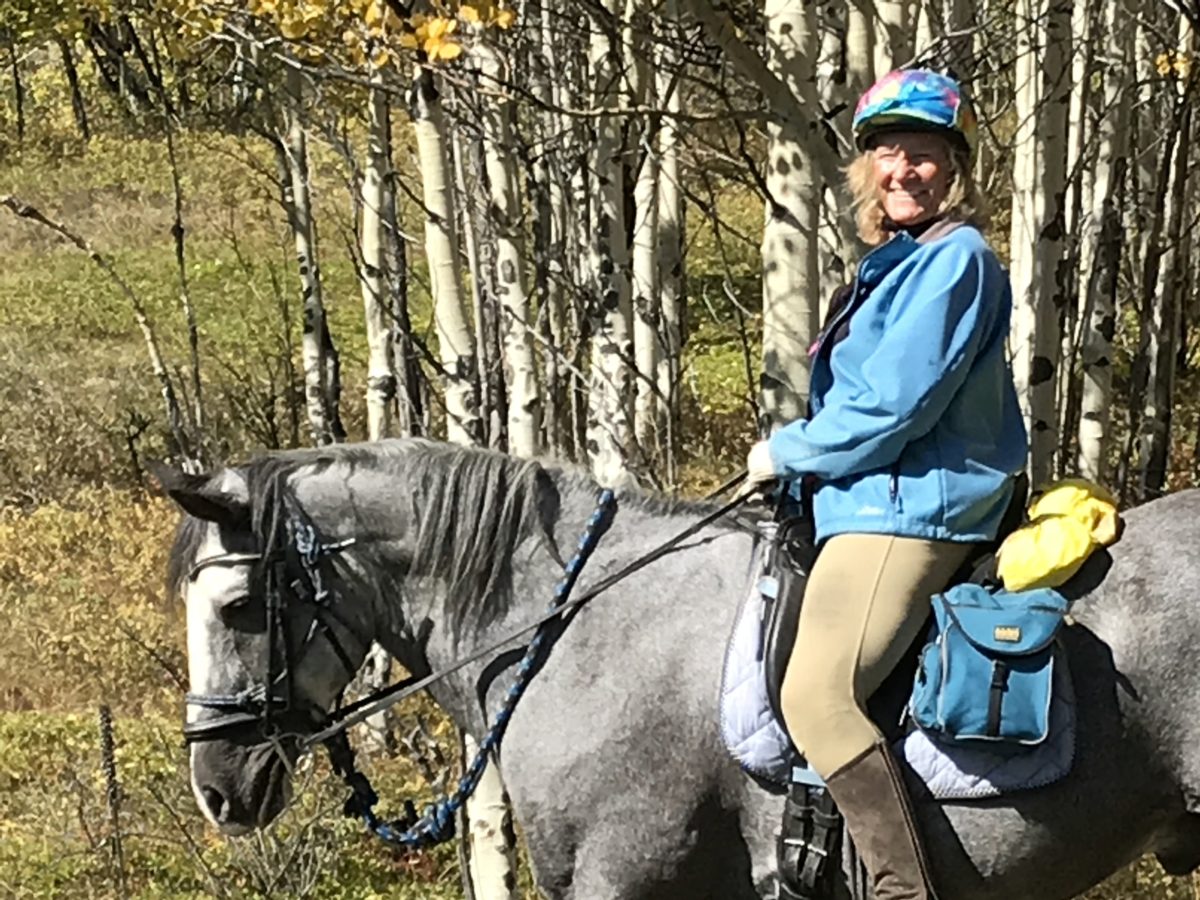By Suzanne Webel
Thank you, Larimer County, for Hermit Park!!! Goodbye, Lion Gulch, and good riddance.
I have spent many hours over the past thirty years trying to find a better access to one of my favorite haunts: Homestead Meadows. And for 30 years I have been frustrated by the steep, rocky Lion Gulch Trail, by private property owners blocking access to the National Forest, by no-public-access conservation easements, and by impassable four-wheel-drive only roads. Then, in 2007, Larimer County stepped up to the plate in a magnificent way and purchased Hermit Park from Hewlett Packard, thereby opening up a very civilized, scenic, and historic access to Homestead Meadows.
Even more miraculously, they took less than a year to open the entire property to the public, complete with trailheads, cabins, picnic areas, campgrounds, and – gasp – some nice trails! Land managers in the People’s Republic might note that Larimer County Parks and Open Lands feels that it is doing a good job protecting its natural resources and welcoming the public to enjoy those resources, and came to that conclusion without much drama in a reasonable amount of time!
Access the property from Highway 36 just east of the crest in the road before it descends to Estes Park. At the time of this writing there is a nominal fee of $6 per vehicle. Stop in for a map, if you wish, and proceed up the dirt road to the Kruger Rock Parking Lot, the Kruger Equestrian campsites (!), or to the Homestead Meadows Parking Lot. The short trail goes through some nice meadows and woods, and over a short rocky stretch, in order to avoid an awkward private property boundary. When you descend to an old road with a gate on your left, and head right, you’ll be on your way to Homestead Meadows. Hooray!
HOMESTEAD MEADOWS
Free land! Homestead in the Rockies! Opportunity, adventure, and a dream come true for those who dare! The Homestead Act of 1862 encouraged western expansion by opening America’s public lands to agricultural settlement. Under the Homestead Act, more than a million families received title to over 248 million acres of land west of the Mississippi.
To qualify for a homestead, you had to be a U.S. citizen or express the intention of becoming one, be older than 21 or the head of a household, and own fewer than 160 acres of land. Then you had to “prove up” the land, building a house within five years, occupying the land at least six months of each year, cultivate part of the land and show an income from the land. The usual homestead was 160 acres. If you lasted six months, it was yours for $1.25 per acre. If you lasted five years, the whole thing was yours for a nominal filing fee of $15.00.
This remote complex of homesteads was developed in the early 1900’s by pioneers for whom the booming towns of Pella, Altona, and Canfield represented just too many folks crowded into just too small an area. They moved up into the hills, raised chickens and cattle, logged the forest, built cabins and barns, and did odd jobs in town to make ends meet. Some lived here in the summer, leaving their families in the valley towns; other families moved up to the high valleys, lock, stock and barrel. They harvested timber for railroad ties, mine props, bridges, corrals, firewood, and Christmas trees. They grew oats, hay, potatoes, and other vegetables in the meadows. But most of the best acreage was already under private ownership, the available public land was remotely located, and the homesteaders usually lacked even basic farming skills. As a result many dreams went unfulfilled, and the majority of homesteaders gave up. In the 1930’s the Depression forced many to sell their properties, which then changed hands many times. The Forest Service bought the 2,240 acres of land known as Homestead Meadows in 1978, and nominated the area to the National Register of Historic Places in 1990. Homesteading programs ended in 1976 in all states except Alaska, which ended its program in 1986.
At least eight of those homesteads stand in mute tribute today to the hard work and gritty tenacity of those early pioneers, with a maze of old roads and trails connecting them. The map shows the patchwork of private and public land, with gates located as accurately as I can indicate them. But be forewarned! Even though I have been to this area many, many times it is still one of the very few areas that I still find so confusing I regularly get lost up there!
Please respect private property boundaries. Even though you may see hundreds of hoofprints traversing the gates as if they weren’t even there, and you may well wonder how come everybody else seems able to go where they please when you can’t, access to the large ranch to the south is leased to a livery and hunting operation for their private use and enjoyment. They can then access the National Forest at will. And the residents of Big Elk Meadows have their own private access to these vast public lands. C’est la vie, apparently.
Equestrians used to have to start at the Lion Gulch Trailhead, on the shoulder of Highway 36. We used to have to endure the bad parking and the 2.5 miles of steep, rocky trail in order to be rewarded with the open meadows at the top. But now that Larimer County has opened the Hermit Park access, I avoid the Lion Gulch Trail altogether because I think it’s downright unsafe for horses. Note: as of 2013 the Lion Gulch Trail was closed due to flood damage.
This high area was called Elk Valley by the homesteaders. To the big bull elk I met up there last time: I won’t tell anybody where our paths crossed, if you don’t!
On your return to Hermit Park, please stop in at the little visitor center and thank Larimer County for providing such an excellent place for equestrians to ride.
Total distance: more than 15 miles of complex loop trails and old roads
Total time: about 6 hours round trip
Difficulty: moderate – difficult
Dogs: yes, on leash or under voice & sight control
Jurisdiction: Larimer County Public Lands, Roosevelt National Forest
USGS Topo: Panorama Peak

